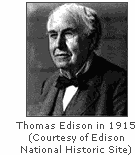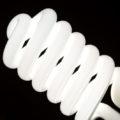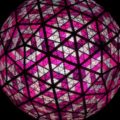Many ways of turning electricity into light have been developed over the two centuries since Sir Humphrey Davy (also the inventor of the “Davy” miner’s lamp) first demonstrated the electric arc in 1802. This section explores some of the histories and technologies developed and the people who created this amazing evolution.
Glowing strands of carbon – History of lighting

The German, Heinrich Göbel, is acknowledged by many to be the first to create a true “light bulb” using a carbonised filament of bamboo inside a glass light bulb in 1854. It was, however, several years before Sir Joseph Swan, the English physicist, developed the first practical “incandescent” lamp based upon very similar technology in the 1870s. Thomas Edison then turned this into a commercially viable product in 1879 and is thus generally thought of as the “inventor” of the electric lamp. Edison put so much of his time into the development of the electric light that he lodged over 1000 patents between 1878 and 1928. To this day, many lamps still use the “Edison Screw” cap.
Edison spent many winters in his home and laboratory near Fort Myers on the west coast of Florida alongside close friend Henry Ford’s estate. You can still see many of his inventions in the fascinating Edison-Ford Estate Museums.
The tungsten filament – History of lighting
Early lamps with carbon filaments were both inefficient and fragile and were soon replaced by tungsten filament lamps after their invention by The General Electric Company (now GE) in 1906. Companies such as Westinghouse vied with GE and The Thomas Edison Company for a share of this exciting new market and innovations came thick and fast. Other well-known names like Osram, Mazda, Philips and Siemens who developed this market throughout the 20th Century are still very much at the forefront of this market today.
Bright sparks – History of lighting

As well as the incandescent lamp developments, the proponents of the electric arc lamp continued their work and this spawned a huge range of “discharge” lamps. By filling the lamp first with carbon dioxide and then the so-called “noble” gases of argon, krypton, neon and xenon, brighter and more efficient lamps were introduced in a range of colours and for a whole spectrum of industrial and commercial applications.
In 1901, the American Engineer, Peter Cooper Hewitt invented and patented the first mercury vapour lamp. This highly efficient lamp gave off a bright bluish-white light which although it had poor colour rendering properties, was often used for street lighting or early (black and white) studio photography.
Further development of the discharge lamp principle then led to the invention of the Fluorescent Light by GE, first exhibited at the New York World Fair in 1938.
SONs – History of lighting
In parallel with this work, yet another variant of the discharge lamp – the high-pressure sodium vapour lamp (SON) was also invented. Producing a characteristic yellow light, these lamps are extremely efficient and are often used in street lighting.
From streetlights to street racers – History of lighting
In the 1960s, GE further extended the work on the arc lamp to produce the first generation of metal halide lamps. These are even more efficient than the original mercury vapour lamps and produce bright white light with a bluish tinge. Initially, metal halide lamps were slow to start up and often took several minutes to reach full brightness. Recent advances in electronic control circuitry have now made this much less of an issue and ultra-compact versions of these lamps are now available in high-end sports cars or even for use on bicycles.
Halogen to the fore – History of lighting
In the late 1950s, engineers at General Electric, still pioneers in lighting technology invented the tungsten halogen lamp. This uses a very high-temperature tungsten filament inside a special halogen filled quartz envelope and produces a very strong, bright white light with improved efficiency ratings of around 15% and generally a much longer life than ordinary incandescent lamps. Their compact size and high colour temperature have made them extremely popular in display spotlighting and “high tech” luminaires.
Compact fluorescents arise – History of lighting
In 1976, Edward E. Hammer and engineer at General Electric, invented the compact fluorescent (CFL), energy-saving light based upon existing fluorescent tube technology the lamps use a tube which is curved or folded to fit into the space of an incandescent light bulb, and a compact electronic ballast is inserted into the base of the lamp. The principle of operation remains the same as fluorescent lighting: electrons that are bound to mercury atoms are excited to states where they will radiate ultraviolet light as they return to a lower energy level; this emitted ultraviolet light is converted into visible light as it strikes the fluorescent coating.
History of lighting – What next?
Advances have continued to focus developments on greater energy efficiency, longer life and lower environmental impact. In line with this trend, lighting based upon light-emitting diodes (“LED light bulbs”) have now emerged. These have excellent energy efficiency and extremely long operating life and can be produced in a range of colour temperatures and even full-colour RGB output.
For a deeper understanding of LED lighting read our LED lighting FAQs.




